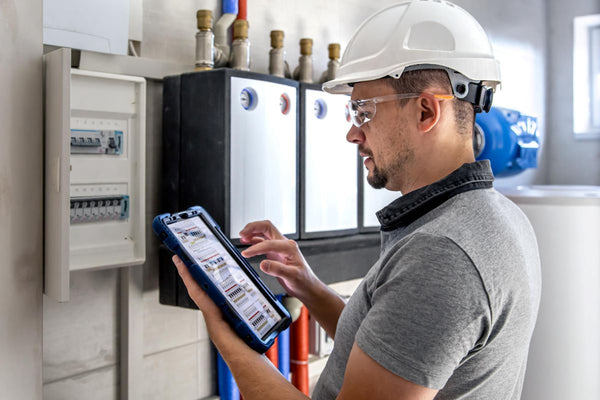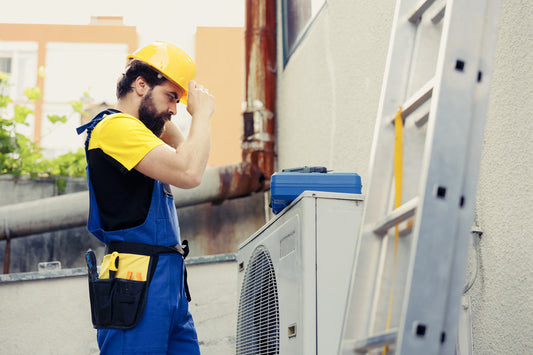Introduction to HVAC Gauges
HVAC gauges, the unsung heroes of the heating, ventilation, and air conditioning world, are indispensable tools that play a pivotal role in ensuring our comfort and the efficient operation of HVAC systems. These tools, often overlooked by the untrained eye, are crucial for diagnosing and maintaining the health of HVAC systems.
But what exactly are HVAC gauges, and why are they so important?
In this guide, we'll dive into the world of HVAC gauges, exploring their functions, importance, and how to use them effectively.
The Anatomy of HVAC Gauges
Understanding the Manifold
At the heart of HVAC gauges is the manifold, a term that encapsulates the essence of these tools. The manifold serves as the command center of the gauges, comprising the gauges themselves, hoses, valves, and occasionally a sight glass. It's the hub where all critical actions take place, from measuring pressure to controlling the flow of refrigerant.
Understanding the manifold's components and their functions is the first step in mastering the use of HVAC gauges.
The Role of Pressure Gauges
Pressure gauges act as the eyes of the HVAC technician, offering vital information about the system's health. These gauges measure the pressure within the system, which technicians can then translate into temperature readings. Such readings are essential for diagnosing issues and ensuring the system operates efficiently.
By interpreting these pressures and temperatures accurately, technicians can make informed decisions about necessary adjustments or repairs.

Image by pvproductions on Freepik
How to Use HVAC Gauges
Calibration: The First Step
Before using HVAC gauges, it's crucial to calibrate them. Calibration ensures that the gauges provide accurate readings, laying the foundation for any reliable HVAC maintenance or repair work. This process adjusts the gauges to zero, accounting for atmospheric pressure and ensuring precision in readings. Skipping this step can lead to incorrect diagnoses and inefficient system performance.
Connecting the Hoses Correctly
The hoses of the HVAC gauges are akin to the veins of the human body; they must be connected correctly for the system to function properly. This section guides you through the process of securely attaching the hoses to the manifold and the HVAC system, ensuring a seamless operation. Proper hose connection is critical for accurate pressure measurement and refrigerant management.
The Importance of the Sight Glass
While not all HVAC gauges come with a sight glass, those that do offer a window into the system's operation. The sight glass allows technicians to observe the refrigerant flow, providing insights into the system's condition and the efficiency of the charging process. This feature can be invaluable for diagnosing issues with refrigerant levels or flow, aiding in the precise adjustment of the system.
Practical Tips for HVAC Technicians
Avoiding Common Mistakes
Even the most experienced technicians can make mistakes when using HVAC gauges. This section covers common pitfalls to avoid, such as incorrect calibration, improper hose connections, and misinterpretation of gauge readings. By being aware of these common errors, technicians can ensure their work is always top-notch, leading to more accurate diagnoses and efficient system performance.
Maintenance and Care
To ensure your HVAC gauges provide long service life and accurate readings, proper maintenance and care are essential. Regular calibration, careful handling, and routine inspection of seals and valves can keep your gauges in optimal condition. This section offers tips on maintaining your gauges, emphasizing the importance of cleanliness and proper storage to prevent damage and contamination.

Image by DC Studio on Freepik
Advanced Tips for Using HVAC Gauges
Understanding Refrigerant Flow
The flow of refrigerant through the HVAC system is fundamental to maintaining comfortable indoor temperatures. This section explores how HVAC gauges can help technicians understand and control this flow, ensuring optimal system performance. By mastering the use of gauges, technicians can effectively charge, recover, and diagnose refrigerant issues, leading to more efficient and reliable HVAC operation.
The Significance of Proper Handling
While using HVAC gauges may seem straightforward, proper handling is crucial to obtaining accurate readings and preventing damage to the system. This section delves into the nuances of using these tools, including the importance of gentle valve operation and avoiding over-tightening connections. Proper handling ensures the longevity of the gauges and the safety of the HVAC system.
Conclusion
HVAC gauges are more than mere tools; they are the key to unlocking the full potential of any HVAC system. By understanding how to use these gauges effectively, technicians can ensure systems run efficiently, saving time, money, and energy.
This guide has explored the essential aspects of HVAC gauges, from their anatomy and use to practical tips for technicians. With this knowledge, you can approach HVAC maintenance and repair with confidence, ensuring optimal system performance and comfort.
FAQs
What is the primary purpose of HVAC gauges?
The primary purpose of HVAC gauges is to measure the pressure within an HVAC system, which can be translated into temperature readings. These readings are crucial for diagnosing system issues and ensuring efficient operation.
How often should HVAC gauges be calibrated?
HVAC gauges should be calibrated regularly, ideally before each use, to ensure accurate readings. Regular calibration accounts for any shifts in atmospheric pressure and maintains the precision of the gauges.
Can I use any hose with my HVAC gauges?
It's important to use the correct hoses designed for your specific HVAC gauges. Hoses are color-coded and must match the intended port on the manifold to ensure accurate pressure readings and prevent cross-contamination.
What is the significance of the sight glass on some HVAC gauges?
The sight glass allows technicians to observe the flow of refrigerant through the system, providing insights into the system's condition and the efficiency of the charging or recovery process.
How can I avoid damaging the seals on my HVAC gauges?
To avoid damaging the seals, ensure that connections are not over-tightened and that the gauges are stored properly when not in use. Regular inspection and replacement of worn seals can also prevent leaks and maintain gauge accuracy.
Image by DC Studio on Freepik





